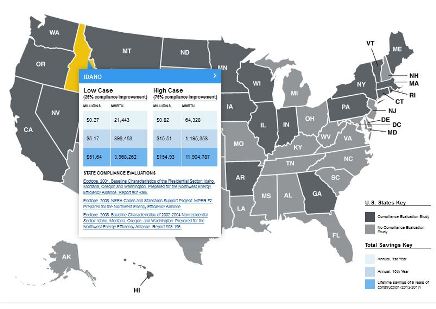As I approach my third anniversary as IMT’s code specialist and my eighth year working with building energy codes, I find it a good time to reflect on some of the lessons I’ve learned about improving energy code compliance in the U.S., while also contemplating some opportunities for increasing compliance going forward.
Code compliance—or, more specifically, the lack thereof—has been a constant challenge, as local legislative bodies, building departments, and inspectors are often insufficiently educated on the hows and whys of enforcing the energy code, among other barriers. Energy codes also suffer from a lack of public appeal: A bright solar panel is a lot sexier than new insulation.


This looks exciting This doesn’t
However, over the past five years energy code compliance has gained more attention. Some of this attention can be attributed to the passage of the American Recovery and Reinvestment Act of 2009 (ARRA), which placed a large focus (and significant short-term funding) on energy code compliance by requiring states to reach 90 percent compliance with their energy code by 2017 in order to receive energy funding.
This investment helped get the ball rolling on recognizing energy code compliance as an area that could yield significant energy savings in America’s buildings.
The majority of ARRA compliance funding went to state-wide compliance assessments—and although they were designed to provide a statistically valid compliance rate for a state, there was little guidance on how to improve compliance rates or funding to assist with improvement initiatives. One problem was compliance assessment results were aggregated to the state level, yet the verification of compliance was and still is the responsibility of local jurisdictions. In most cases states have little influence on the compliance verification process and don’t have the ability to implement improvement initiatives.
Recognizing these resource constraints and this gap in capabilities is key.
The solution to improving energy code compliance is to work with local building departments to evaluate their quantitative compliance rate and to conduct a qualitative assessment to understand the reasons behind that compliance rate. In city compliance assessments that IMT commissioned the Britt/Makela Group to conduct, it was discovered that commercial fenestration was commonly non-compliant, but the reasons for this differed from city to city. 
A good qualitative evaluation will uncover whether non-compliance can be attributed to an architect not specifying the proper window glazing, an inspector not verifying compliance, or to actions of the building department, the building industry, and even elected officials or city policy.
Many local jurisdictions can feel threatened by this type of evaluation because they view it as a criticism or audit of their work. However, by working with them and respecting the important and difficult work that building officials, plans examiners, permit technicians, and inspectors do on a daily basis to verify hundreds of code provisions, this impression can be overcome. And in fact, an energy code assessment will not only help improve energy code compliance, but also may help raise compliance with other health and safety codes.
There are other ways to help increase compliance rates. In resources developed by IMT over the past three years, we’ve addressed many best practices, such as the use of third parties, streamlining compliance practices, design professional accountability, and compliance for renovation projects. IMT also launched the Standard Bearers Award, in 2012, as a way to recognize individual code officials, local jurisdictions, and states doing an excellent job at improving energy code compliance.
In order to demonstrate the energy savings potential from improved compliance, IMT has mapped out the potential savings for each state, and reported on the non-energy benefits of the energy code such as positive impacts on resilience, durability, and air quality.
Click on the image to see IMT’s code compliance savings potentilal map
We’re continuing to develop new tools as well. As part of the City Energy Project (CEP), a joint project of IMT and the Natural Resources Defense Council, IMT is now working on ways to scale energy code compliance improvement in cities. Among the resources under development is a new methodology that outlines how a quantitative and qualitative compliance assessment should be done in medium to large cities. A second resource will outline the steps cities should take to improve code compliance.
A methodology for cities to use in conducting energy code compliance assessments is crucial for ensuring consistency in the assessment approach and subsequent results. It’s important to focus compliance assessments and improvement initiatives at the city level because these offices have direct control over enforcement.
There is one more issue that must be addressed on the path ahead: Although there has been an increased focus on compliance over the past five years, the need for consistent funding is paramount to seeing wide-reaching compliance improvement and realizing the maximum energy savings that energy codes promise. The key to tapping long term, stable funding is to get utilities and public utility commissions to realize that significant energy savings are possible with improved energy code compliance.
The last eight years have brought about a number of opportunities to foster increased compliance rates. The strategies above should help to continue this drive in the years to come.
*Photos courtesy of Shutterstock
